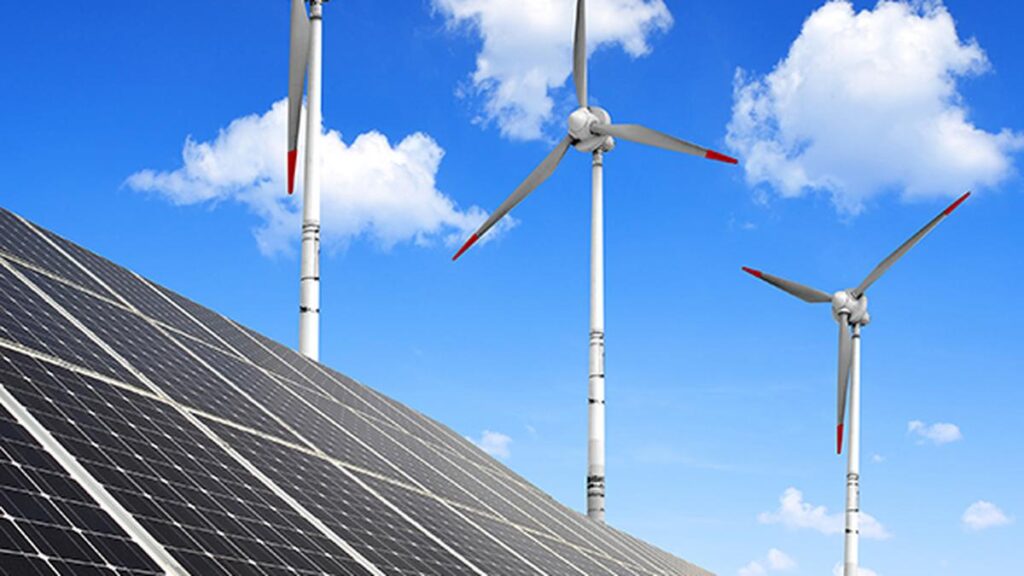
Jindal group targets 5 GW renewable energy capacity by 2030
Jindal Renewable Energy 5GW Target: $2.5 Billion Investment Plan Unveiled for 2030
Table of Contents
- Jindal Renewable Energy 5GW Target: Ambitious Clean Energy Plans
- $2.5 Billion Investment Strategy and Funding Approach
- Technology Mix: Solar, Wind, Hybrid and Storage Solutions
- Manufacturing Expansion and Backward Integration
- Strategic Project Wins: NHPC’s 300MW Solar Plus Storage
- India’s Renewable Energy Market Analysis and Growth Potential
BC Jindal Group’s renewable energy expansion will be funded through a combination of internal accruals and debt financing. (Photo: vencavolrab)
The BC Jindal Group has unveiled its ambitious Jindal Renewable Energy 5GW Target, announcing plans to achieve 5 gigawatts (GW) of renewable energy capacity by 2030. This strategic initiative, spearheaded by its renewable energy arm Jindal India Renewable Energy (JIRE), will involve investments totaling $2.5 billion (approximately ₹21,500 crore) over the next five years as the conglomerate positions itself as a major player in India’s rapidly expanding clean energy sector.
Jindal Renewable Energy 5GW Target: Ambitious Clean Energy Plans
The Jindal Renewable Energy 5GW Target represents a significant pivot for the BC Jindal Group, which has traditionally been known for its industrial operations. The conglomerate, which was founded in 1952 and began as a steel pipe manufacturer, is now making a substantial commitment to sustainable energy development as part of India’s broader energy transition efforts.
Through its dedicated renewable energy subsidiary JIRE, the group aims to develop a diverse portfolio of clean energy assets that will help meet India’s growing electricity demand while simultaneously contributing to the nation’s decarbonization goals. The Jindal Renewable Energy 5GW Target aligns with India’s ambitious renewable energy objectives, which include achieving 500 GW of non-fossil fuel electricity capacity by 2030.
“Our 5GW target demonstrates BC Jindal Group’s commitment to sustainable development and energy security in India. We are leveraging our industrial expertise to become a significant contributor to the country’s clean energy transition,” stated a spokesperson for the BC Jindal Group regarding their renewable energy expansion plans.
The group currently operates a 1,200 MW thermal power generation unit in Angul, Odisha, giving it substantial experience in the power sector that it aims to leverage for its renewable energy initiatives. The Jindal Renewable Energy 5GW Target represents more than quadruple this existing capacity, signaling the scale of the company’s clean energy ambitions.
$2.5 Billion Investment Strategy and Funding Approach
To achieve the Jindal Renewable Energy 5GW Target, the group plans to invest approximately $2.5 billion (₹21,500 crore) over a five-year period. This significant capital allocation will be directed toward developing various renewable energy projects across India, as well as expanding the company’s manufacturing capabilities for key components of the renewable energy value chain.
Funding Structure
According to company representatives, the expansion needed to reach the Jindal Renewable Energy 5GW Target will be funded through a combination of:
- Internal Accruals: Leveraging cash flow from existing operations
- Debt Financing: Strategic borrowing to maximize capital efficiency
- Potential Partnerships: Collaborations with technology providers and financial institutions
The expansion is expected to be completed within four years, creating a steady pipeline of projects that will contribute to the Jindal Renewable Energy 5GW Target by 2030. This phased approach allows the company to adapt its strategy based on evolving market conditions, regulatory frameworks, and technological advancements in the renewable energy sector.
While the investment represents a substantial financial commitment, industry analysts note that it positions JIRE to capture a meaningful share of India’s growing renewable energy market, which is projected to see over $500 billion in investments by 2030 according to government estimates.
Technology Mix: Solar, Wind, Hybrid and Storage Solutions
A key aspect of the Jindal Renewable Energy 5GW Target is the company’s diversified approach to technology selection. Rather than focusing exclusively on one renewable energy source, JIRE plans to develop a mix of complementary technologies that can provide more reliable and consistent power generation:
Renewable Technology Portfolio
The Jindal Renewable Energy 5GW Target will be achieved through a strategic combination of:
- Solar Power Projects: Utility-scale photovoltaic installations across multiple states
- Wind Energy: Both onshore and potentially offshore wind developments
- Hybrid Systems: Co-located wind and solar plants that optimize land use and transmission infrastructure
- Firm and Dispatchable Renewable Energy: Projects incorporating battery storage to provide reliable power
The company is placing particular emphasis on battery energy storage systems (BESS) as a critical component of its Jindal Renewable Energy 5GW Target. These storage solutions will allow JIRE to enhance grid stability while addressing the intermittency challenges typically associated with renewable energy sources, making its renewable portfolio more valuable to the grid and potentially enabling participation in capacity and ancillary service markets.
JIRE is actively pursuing technology collaborations to ensure high-quality battery production, recognizing that energy storage represents one of the fastest-growing segments within the renewable energy ecosystem. This focus on storage aligns with the Indian government’s emphasis on developing round-the-clock renewable power solutions to reduce reliance on thermal power for grid balancing.
Manufacturing Expansion and Backward Integration
As part of its strategy to achieve the Jindal Renewable Energy 5GW Target, BC Jindal Group is making significant investments in manufacturing capabilities. The company has announced plans for backward integration through the production of key components for renewable energy systems, particularly solar cells and modules.
Manufacturing Initiative
JIRE is establishing a state-of-the-art solar cell and module manufacturing plant with an annual capacity of 2 GW in Maharashtra. This facility, which represents a major component of the Jindal Renewable Energy 5GW Target strategy, is expected to be operational by September 2026.
The manufacturing expansion serves multiple strategic objectives beyond supporting the Jindal Renewable Energy 5GW Target:
- Supply Chain Control: Reducing dependence on imported components and minimizing exposure to international supply chain disruptions
- Quality Assurance: Maintaining strict quality standards for critical system components
- Cost Optimization: Potentially lowering overall project costs through vertical integration
- Policy Alignment: Supporting India’s “Make in India” initiative and potentially qualifying for production-linked incentives
The 2 GW manufacturing capacity represents a significant addition to India’s domestic solar manufacturing base, which the government has been actively encouraging through various policy measures. By developing this manufacturing capability, JIRE positions itself not only as a renewable energy developer but also as a key equipment supplier in the domestic market, creating a more robust foundation for achieving its Jindal Renewable Energy 5GW Target.
Strategic Project Wins: NHPC’s 300MW Solar Plus Storage
JIRE has already begun making progress toward its Jindal Renewable Energy 5GW Target with significant project wins. Most notably, the company recently received a Letter of Acceptance for a 300 MW solar plus storage project from NHPC Limited (formerly National Hydroelectric Power Corporation), a major state-owned enterprise in India’s power sector.
NHPC Project Details
This strategic contract is part of NHPC’s larger 1,200 MW inter-state transmission system-connected solar power initiative, which includes 600 MW/1200 MWh of energy storage systems. The project represents an important early milestone in JIRE’s journey toward its Jindal Renewable Energy 5GW Target.
The award of this significant project by a prominent government entity signals confidence in JIRE’s technical capabilities and project execution expertise. Solar plus storage projects are particularly valuable in the evolving Indian energy landscape, as they provide more reliable power output throughout the day and can continue delivering electricity even after sunset during peak demand periods.
The NHPC project aligns perfectly with the company’s focus on developing firm and dispatchable renewable energy solutions as part of its Jindal Renewable Energy 5GW Target. By demonstrating its capabilities in this complex and technically demanding project type, JIRE establishes important credentials that may help secure additional large-scale projects from both public and private sector customers.
India’s Renewable Energy Market Analysis and Growth Potential
The Jindal Renewable Energy 5GW Target is being pursued against the backdrop of rapid growth in India’s renewable energy sector. With the country committed to achieving 500 GW of non-fossil fuel electricity capacity by 2030 as part of its Nationally Determined Contributions under the Paris Agreement, there is substantial market opportunity for well-positioned players like JIRE.
Energy Storage Market Outlook
The Indian battery energy storage system (BESS) market is projected to grow at a compound annual growth rate (CAGR) of 11% through 2032, according to industry forecasts. This robust growth, which supports JIRE’s focus on storage as part of its Jindal Renewable Energy 5GW Target, is being driven by the increasing need for round-the-clock renewable power supply and grid stability services.
Several market factors create a favorable environment for the achievement of the Jindal Renewable Energy 5GW Target:
- Falling Technology Costs: Continuing decreases in the cost of solar panels, wind turbines, and battery storage systems
- Supportive Policy Framework: Government initiatives including renewable purchase obligations, viability gap funding, and production-linked incentives
- Growing Corporate Demand: Increasing adoption of renewable energy by commercial and industrial consumers seeking to reduce carbon footprints
- International Climate Finance: Expanding availability of green finance and sustainable investment options
With its combination of project development capabilities, manufacturing investments, and focus on advanced technologies like battery storage, BC Jindal Group appears well-positioned to capitalize on these market opportunities and achieve its Jindal Renewable Energy 5GW Target by 2030.
Conclusion: Strategic Transformation
The Jindal Renewable Energy 5GW Target represents a significant strategic transformation for the BC Jindal Group, which is evolving from its industrial roots to become a major player in India’s renewable energy landscape. By committing $2.5 billion to develop 5 GW of clean energy capacity through a diverse technology mix, establishing manufacturing capabilities, and focusing on advanced solutions like battery storage, the company is positioning itself at the forefront of India’s energy transition.
As the initiative progresses over the coming years, the group’s success in achieving its Jindal Renewable Energy 5GW Target will be measured not only by the capacity installed but also by its contribution to grid stability, local manufacturing capabilities, and the broader goal of sustainable economic development in India.






